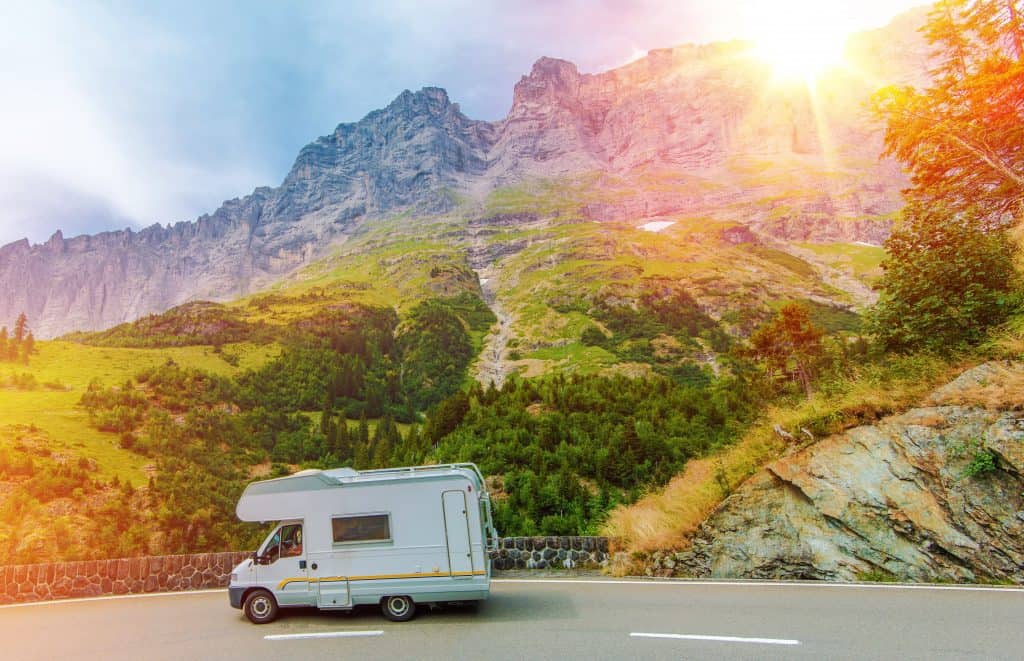
It can be incredibly hard to choose the right class of RV for your family. It’s pretty shocking, but studies have found that the average buyer of a brand new RV will only keep it for an average of 2.4 years. Why? Because so many of us (me included), often buy something that we later learn doesn’t quite suit their needs how they’d hoped.
Let’s take a look at one of the many options to take on your family vacation: Class C Motorhome
Pros and Cons of a Class C RV are…
- Pro: Ease of driving
- Pro: No hooking up to a truck
- Pro: Easier to maneuver
- Pro: Passengers can make lunch, sleep and use restroom while driving
- Con: Don’t have a vehicle to explore with once you set up camp
- Con: More expensive than other towable RV’s
- Con: Less storage than a Class A
Continue reading for more pros of cons so you can make the best long-term decision for your family.
Don’t have a trailer yet? Nervous about setting up? Check out our guides to help you master your trailer!
Pros of a Class C RV
1. An Extra Bed Area Above the Driver’s Seat
In a towable or in
Class C RVs range from 20 to 35 feet in length. This length, although it may seem the same length of a teardrop travel trailer and its towing vehicle, allows for a lot more use of the space provided.
A Class C RV comes with all of the amenities of a classic RV- a kitchen, bathroom, living area, a bedroom, and a driving area- while still staying small enough to be easy to drive and maneuver.
2. Motorized and Easily Serviced
One of the main features that lead people to tend to prefer Class C motorhomes over a towable alternative is the motorization of the Class C motorhome. Having a mobile home that is completely motorized is a huge advantage. It means that you only have to worry about one vehicle at a time.
Since you only have to worry about one vehicle, you end up getting the most space possible with the smallest length. There is no wasted space with hitches or any other gizmos you need to buy and attach in order to tow a trailer.
This also means that you save money when you buy a fully motorized RV. You don’t have to buy all of the attachments that come with buying a camper or other towable option. For example, when you buy a camper that goes in the bed of a truck (truck camper), you have to buy a lot of extra gear in order to attach it and make sure that it is safe while you drive. Here is a list of things you would have to make sure that you have:
- a hitch
- a hitch extension
- turnbuckles
- a front tie down
- a rear tie down
- really good suspension
Because a Class C motorhome is completely motorized and all in one piece, you don’t have to worry about any of that and get to save money for the adventure instead.
3. You Don’t Need to Purchase a Large Towing Vehicle in Addition
RV’s can only be pulled by pickup trucks or SUVs, so when you buy an RV, you have to make sure that you have a vehicle that can properly and safely tow it. Most people, when they begin to shop for RVs, don’t already have a vehicle they can tow the RV with. That means that they already have to shell out money for an RV and then they have to pay an additional arm or leg for the towing vehicle (leaving them with only two remaining limbs if you do the math).
Class C motorhomes, on the other hand, are completely motorized and do away with the need to purchase an additional towing vehicle. Below is a table listing the prices for the most popular vehicles to tow an RV with and the price when you add the cost of an RV:
| Price | Price in Addition to Buying a Travel Trailer | |
| 2022 Chevrolet Colorado (truck) | $25,435 | $36,300 – $51,300 |
| 2022 Mercedes Benz Sprinter (van) | $38,300 | $48,790 – $63,790 |
| 2022 Chevrolet Suburban (SUV) | $53,200 | $65,800 – $80,800 |
| 2022 Ford Expedition (SUV) | $69,150 | $67,130 – $82,130 |
| 2022 Nissan Titan XD (truck) | $45,880 | $47,890 – $62,890 |
| 2022 Toyota Land Cruiser (SUV) | $85,015 | $100,015 – $115,015 |
| 2022 Ram 1500 EcoDiesel (truck) | $36,675 | $46,695 – $61,695 |
| 2022 Ford F-250 Super Duty (truck) | $37,495 | $75,440 – $90,440 |
As you can see, buying a travel trailer and then buying a vehicle to tow it with adds a whole lot more stress to your budget. You should be planning for the next adventure, not planning how on earth you are going to keep up with the payments.
When you buy a Class C motorhome, you really buy a way to eliminate that stress. You no longer have to worry about maintaining or paying for two vehicles. Because the Class C motorhome is completely motorized, you only have to worry about it and nothing else.
4. It’s Easy to Tow a Secondary Vehicle (TOAD) Behind
If you do want to have another vehicle with you, then you are still in luck. A vehicle that you tow behind an RV or motorhome is called a toad. A Class C motorhome, while still being relatively small, is large enough to tow a toad behind it.
Toads are usually fairly small cars that don’t weigh very much, that way can easily be pulled along. Below is a list of some of the most popular toads, their weights, and their prices.
| Weight (lbs) | Price | |
| 2022 Chevrolet Spark | < 2400 lbs | $14,000 |
| 2022 Jeep Wrangler | < 3900 lbs | $29,500 |
| 2022 Nissan 370Z | < 3300 lbs | $42,000 |
| 2022 Scion iM | < 3000 lbs | $19,,000 |
| 2022 Ford Fusion Hybrid | < 3650 lbs | $31,400 |
| 2022 FIAT 500 Abarth | < 2550 lbs | $22,000 |
| 2022 Buick Enclave | < 4725 lbs | $42,000 |
| 2022 Toyota Corolla | <2825 lbs | $20,100 |
| 2022 Ram 1500 | < 4525 lbs | $35,900 |
| 2022 Chevrolet Colorado | < 3950 lbs | $25,500 |
If you want to find out more about each of the vehicles mentioned above, then click here to visit roamingtimes.com, the website that explains exactly why each one is a stellar pick for a toad for you.
Most people bring along toads because it allows more access to more adventures. Class C motorhomes are a little too unwieldy to bring along when you want to go off-roading, and they can even be cumbersome in the city. But with a toad, you can simply unhook and go driving.
5. You Don’t Have to Worry About Hitching or Unhitiching Your RV
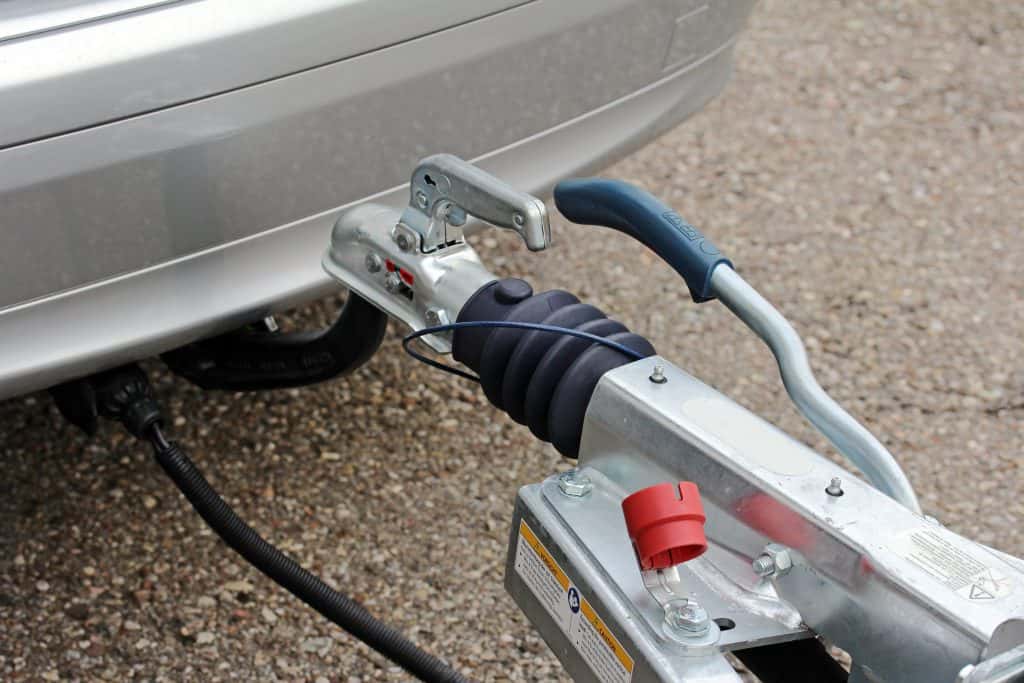
As an avid RVer, I know that the most difficult, the most time-consuming, and the most un-fun part of RVing is hooking the rig up and unhooking it when you’ve reached your destination. You constantly have to back up, drive an inch forward, back up again, move the right, inch forward, and then you’re too far right. Plus you have to have another person off to the side yelling instructions to you that you can’t even hear over the wind and the truck engine. It’s a mess.
Well, the nice thing about Class C motorhomes is that you don’t have to worry about any of that. Because it is completely motorized, there is no need to hitch up the RV to another vehicle.
If you did chose to take a toad along with you, you would have to worry about hitching that up to your Class C motorhome, but hitching up a toad is much easier than hooking up and unhooking an RV, travel trailer, or motorhome to your towing vehicle.
6. Easily Serviced if You Have a Ford Chassis
Your RV, travel trailer, or motorhome is going to break down. It will. That’s just the long and the short of it. No matter how well you take care of your vehicles or how new they are, they are going to break down on the side of the road in the middle of nowhere. Welcome to the realities of life on the road.
The good news is that if you are traveling in a Class C motorhome, then getting it serviced and fixed is a piece of cake. Class C motorhomes are built on Ford chassis, or frames, which are very familiar to car mechanics. Ford service centers are also located everywhere in the United States.
Obviously, this is not an inclusive list, it’s not even halfway there. The point is that you can find a Ford service center probably within walking distance from your home, campground, or major attraction. Just drop off your Class C motorhome and go on a little mini-adventure for a few hours before you have to pick it back up again when it’s in working condition.
Even if you don’t use a Ford service center, any car mechanic is going to be familiar with a Ford chassis and can help you out when there is something wrong with your Class C motorhome.
7. More Affordable Than Many Motorized Options

When you’re looking to purchase an RV, you can expect to pay quite a bit of money, and there isn’t really a way to get around that fact. However, when it comes to a fully motorized RV or motorhome, a Class C motorhome is going to give you the most bang for your buck.
Class C motorhomes are more expensive than travel trailers, but they are much cheaper than many of the other motorized RV options. Below is a table with the average prices of motorized RV options.
| Average Cost | |
| Average RV | $75,000 |
| Class A Motorhome | $100,000 |
| Class B Motorhome | $90,000 |
| Class C Motorhome | $70,000 |
In the table above, you’ll see that the Class C motorhome is actually on average $5000 more expensive than the average price for the Class B motorhome. However, for only $5000 more, the Class C motorhome provides more room, more storage, more amenities, and more comfort, so many people think it’s a price worth paying.
The point still stands that a Class C motorhome is much less expensive than most motorized options.
8. Class C RVs are Better Equipped for Boondocking
To many people, the main attraction of RVing is the opportunity for them to camp and travel completely off-grid while still being about to sleep in a real bed at night and cook dinner on a real stove and then shower in the morning.
Class C motorhomes are much better equipped for boondocking than other towable units. Class C motorhomes have bigger water tank capacities and larger generators. They are also more sturdy than some towable and they are smaller than a truck towing a travel trailer so they can get to a lot of boondocking sites that would be unavailable to those in travel trailers.
More power in the generator and more water in the tank means you can stay out in the boonies for a whole lot longer and have a whole lot more adventure.
9. The Master Bedroom is Bigger Than Other Towable Options
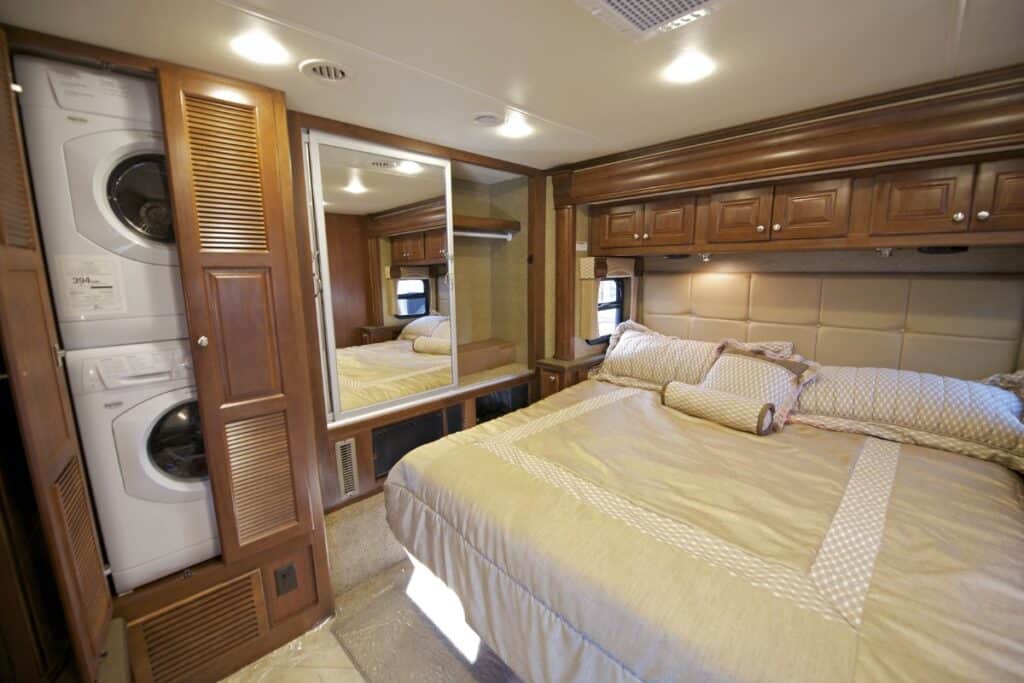
A Class C RV is bigger than a travel trailer or a Class B motorhome, so it does have more room to fit a bigger master bedroom. Below is a table that shows the different mattress sizes for the different RV options:
| Mattress Size | |
| Class A Motorhome | Queen |
| Class B Motorhome | Two Twins, Full, or Queen |
| Class C Motorhome | Queen |
| Travel Trailer | 3/4, Short Queen, or Full |
A lot of the RV options have a queen-sized mattress. However, because of the extra room in the Class C motorhome, there is room for more than just a mattress in the master bedroom. In a lot of Class B motorhomes or travel trailers, the master bedroom consists solely of a mattress. In a Class C motorhome, however, there is usually room for two nightstands and walking space, making it much more pleasant.
Many rv manufacturers also make an area and hookups for a small washer and dryer, typically in the master bedroom.
10. Class C RVs are Safer than Class A RVs
Even though Class C motorhomes are much smaller than Class A motorhomes, they are much better prepared for crashes than Class A motorhomes are.
Class C motorhomes are equipped with a large crash box in the front of the RV that is designed to take on the impact of a head-on crash, like one that would occur if a vehicle in one lane drifted to the other (that happens a lot with drivers who drive of long periods of time like truckers or RVers).
There are also more airbags in a Class C motorhome than there are in Class A motorhomes. And if one of the exits ends up getting blocked in a crash, the Class C motorhome comes with more exits than a Class A motorhome, meaning you are much safer in the event of a crash.
11. Easier to Drive
Class C motorhomes are completely motorized and condensed, meaning that they are far easier to drive in the city and to campsites. Without a travel trailer, there is no danger of trailer sway, where your trailer (or travel trailer or RV) starts to sway back and forth across the road. You don’t even need a special license to drive the Class C motorhome because it is that easy.
12. Gas Mileage of Class C RVs is Better than Class A RVs
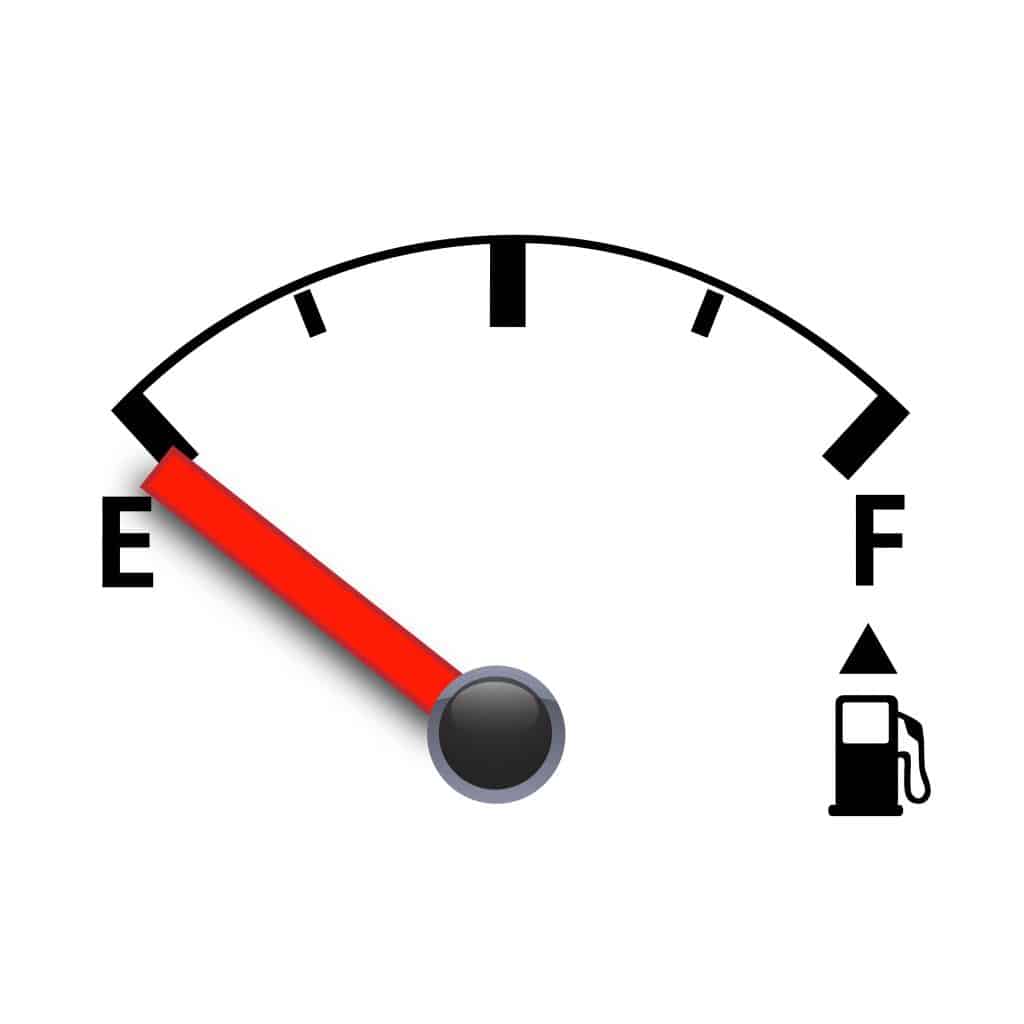
It’s a sad fact that RVs and motorhomes have pretty bad gas mileage. However, Class C motorhomes have pretty good gas mileage, especially when compared to Class A motorhomes. Below is a table that details the gas mileage between the three different classes of motorhomes.

The Class B motorhome does get better gas mileage than a Class C motorhome. However, the gas mileage only improved by a few miles to the gallon, and if you get a diesel engine, you will get much better gas mileage.
13. You Can Transition from Driving to Living Without Stepping Outside
One of the biggest pros people love about Class C motorhomes is the fact that they don’t have to step outside at all to transition from driving to cooking to sleeping to showering. Everything is completely compacted into one space.
This also means that you are going to be safer. I know from experience that having to get out of your truck in the middle of the night in a seedy Walmart parking lot to go to the bathroom or park the car to go to sleep is a little frightening. If you have a Class C motorhome, all you have to do is turn off the ignition, lock the doors, and bed down for the night.
14. More Widely Available Than Class A or Class B RVs
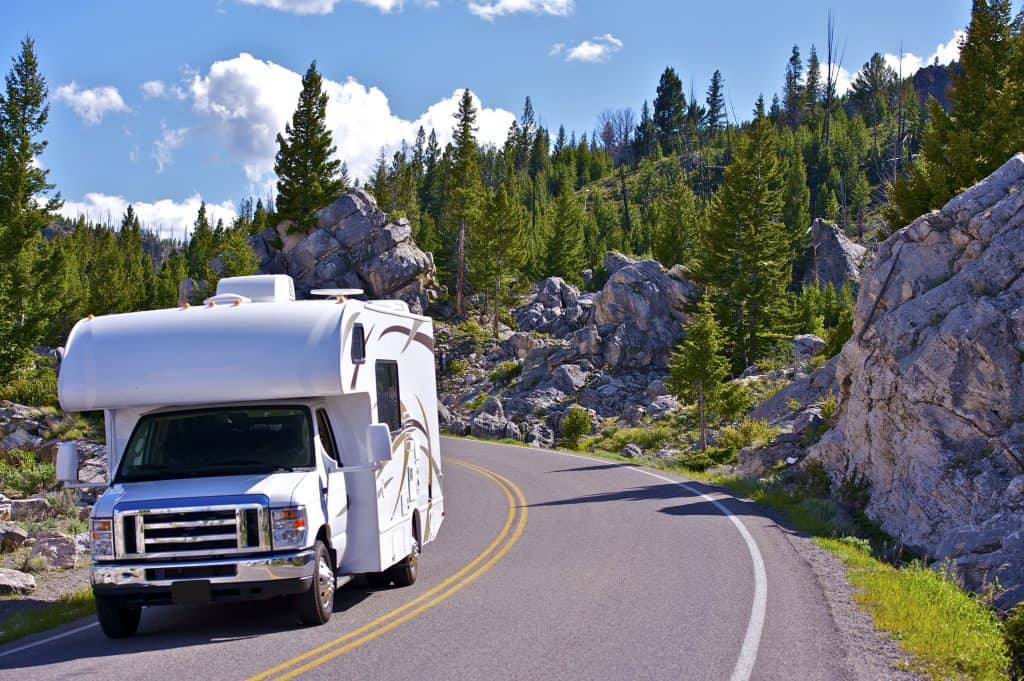
If you’re looking to purchase a Class C motorhome, then you are in luck, because you are more likely to find a Class C RV for sale than you are to find a Class A or B motorhome for sale.
The table below depicts the RV shipments compared and contrasted between December of 2017 and December of 2018. You will find that compared to Class A motorhomes and Class B motorhomes, Class C motorhomes have significantly more shipments. This is because there is a bigger demand for them. And if we all learned anything in economics class senior year of high school, it’s that the bigger the demand is, the larger the supply will become.
YOY stands for Year Over Year, which is the measurement of the rate of how much the sales of a certain motorhome have increased or decreased in the current year versus the year previous. We’ve also used “Com.” to stand for “combined,” or basically how many RVs were shipped out in the combined year.
| Dec 2017 | Dec 2018 | YOY Last Year | Com. 2017 | Com. 2018 | YOY to Date | |
| Conventional (Type A) | 1,833 | 1,215 | -33.7% | 23,343 | 21,719 | -7.0% |
| Van Campers (Type B) | 370 | 385 | 4.1% | 5,249 | 5,881 | 12.0% |
| Mini (Type C) | 2,483 | 1,556 | -37.3% | 34,046 | 29,985 | -11.9% |
| All Motorhomes | 4,686 | 3,156 | -32.7% | 62,638 | 57,585 | -8.1% |
| Total RV Shipments | 36,227 | 28,363 | -21.7% | 504,599 | 483,672 | -4.1% |
The information in the table can be found in more detail on the website rvia.org, which provides RV statistics from across years and models. For more information, you can visit their site here.
Cons of a Class C RV
15. More Expensive Than Other Towable Options
When it comes to small RV options, Class C motorhomes are among the most expensive. Below is a table that details the average costs of some of the most popular small RV options.
| Average Cost | |
| Average Travel Trailer | $15000 – $30000 |
| Tear Drop Trailer | $12000 |
| Off-Road Travel Trailer | $8000 |
| Class C Motorhome | $65,000 |
As you can see, the Class C motorhome is more expensive than the average cost of the average travel trailer. The teardrop travel trailer, one of the most popular travel trailers on the market, is even less expensive than the average cost of travel trailers.
If you decide to purchase a Class C motorhome, you will get more room and less hassle, but you will have to spend a lot more on your rig than the person buying a teardrop travel trailer.
16. The Gas Mileage isn’t Great
As RVs go, the Class C sits right around the middle ground when it comes to gas mileage. They usually get an average of about 17 to 22 miles per gallon. Although this is not as good as the gas mileage you would get in a Class B (around 18 to 25 miles per gallon), it is much better than the gas mileage you would get in a Class A (around 10-12 miles per gallon).
The gas mileage depends on the terrain, how hot or cold your Class C RV is, and the kind of fuel you get. Below is a table with more information on gas mileage in RVs.
When you live your life on the road, or even if you just chose your adventures on the road, gas money and gas mileage become some of the most important things on your list, and they are certainly the things you end up worrying about the most. Because the Class C motorhome does not get as many miles to the gallon, you will end up having to worry more.
17. The Cockpit is Louder and More Rocky
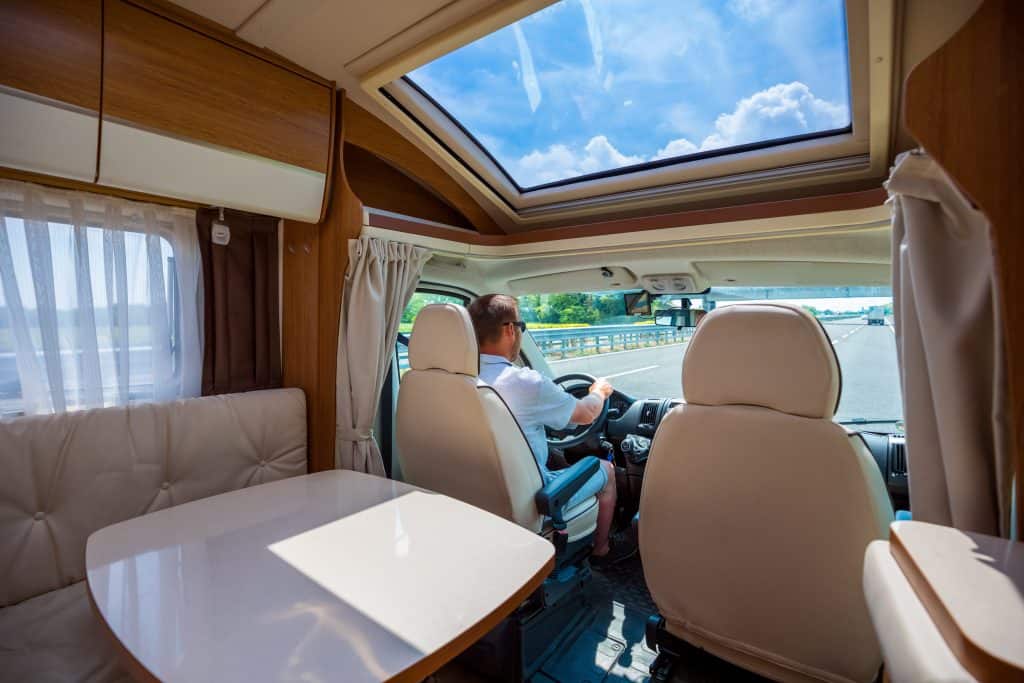
In a Class A RV or in a travel trailer, you can drive in relative peace and smoothness. However, in a Class C motorhome, the cockpit of your rig tends to be louder and a bit bumpier. You feel the potholes on the road more and you can definitely hear the engine and the air conditioner over the radio.
Because the Class C motorhome is all one condensed piece, the suspension suffers slightly, and because it is so big (compared to a truck you would tow a travel trailer with), the engine is bigger and louder. So your drive is going to be louder and rockier than it would be in a truck or Class A motorhome if you decide to go with a Class C motorhome.
18. Limited Travel Options with a Class C RV
When you travel with a travel trailer, you have the option of unhooking your truck and leaving your trailer while you go on a separate adventure without it.
However, with a Class C motorhome, you cannot disconnect anything. That limits your travel options because a Class C motorhome cannot fit everywhere that a truck can.
You can choose to travel with a toad to widen your travel options. However, with a toad, the smoothness of your ride will suffer and you have more vehicles that could need maintenance, along with the potential for trailer sway. A Class C motorhome can usually only tow a toad that weighs around 6,500 pounds, so there is that limitation as well.
19. Less Floor Plan Room Than Other RV Options
Class C motorhomes are right smack in the middle when it comes to size when you are talking about the different classes of motorhomes. They usually end up averaging between 21 and 40 feet in length. Travel trailers average from 10 to 36 feet in length. While this may look like Class C motorhomes have more room, they actually have less usable floor plan room than many travel trailers.
In the pros section, we talked about how Class C motorhomes have more room in a small space than travel trailers do. That was when we were taking the whole setup into consideration, including the towing vehicle. In that light, Class C motorhomes` give you more bang for your buck.
However, when you are talking strictly about floor plan room, then Class C motorhomes can’t beat most travel trailers. Excluding teardrop travel trailers, which are the smallest of the bunch, many travel trailers are around 25 or 30 feet in length. That is roughly the same size as a Class C motorhome, but a Class C also has to include a driving area, which travel trailers do not have to include.
Because travel trailers don’t have to worry about including a driving area, they get to have more space for sleeping, cooking and lounging that Class C motorhomes don’t have the luxury or the space for in the floor plan.
Below is a table that details the size of just the motorhome or travel trailer, not the whole set up including the towing vehicle. You will see that travel trailers and Class A motorhomes (and even some Class B motorhomes) have more floor plan room than Class C motorhomes do.
| Length | Height | |
| Class A Motorhome | 20 ft | 7-9 ft |
| Class B Motorhome | 21-35 ft | 10 ft |
| Class C Motorhome | 21-40 ft | 10 ft |
| Travel Trailer | 10-36 ft | 10 ft |
20. Less Storage Space as Compared with Class A RVs and Travel Trailers

Going along with the previous cons, another con of Class C motorhomes is that they have less storage space than Class A motorhomes and a lot of travel trailers. Because they have more floor plan space, Class A motorhomes and travel trailers also tend to have more storage space built into the floor plan.
Class A motorhomes have a lot of “basement” storage, or space in the undercarriage to store items. Travel trailers with bigger floor plans have more cabinet and drawer space. Class C motorhomes do have more storage than a Class B motorhome usually, but they fall short compared to other options.
21. Requires More Parking Space Than a Class B RV

One of the big cons about buying any kind of rig in general, is the fact that you are going to have to park it somewhere when you are not using it. The bigger the rig, the bigger the space you are going to need to park it.
Class C motorhomes take need more space to park because they are bigger than a lot of other rigs. They need more space than pop-up campers, light trailers, some travel trailers, and Class B motor homes. Below is a table that details how much space you are going to need to park your rig, and then the prices for the most popular sizes of RV garages.
For money-saving tips when storing your motorhome click here!
| Width | Length | Height | |
| Class A Motorhome | 16 ft | 50 ft | 16 ft |
| Super C Motorhome | 24 ft | 48 ft | 16 ft |
| Class C Motorhome | 26 ft | 36 ft | 14 ft |
| Class B+ Motorhome | 10 ft | 25 ft | 14 ft |
| Class B Motorhome | 20 ft | 24 ft | 14 ft |
| Travel Trailer | 30 ft | 40 ft | 14 ft |
| Pop-Up Camper | 24 ft | 24 ft | 24 ft |
| Light Trailer | 20 ft | 20 ft | 12 ft |
| Width | Length | Height | Approx. Price |
|---|---|---|---|
| 20′ | 25′ | 14′ | $7,250 |
| 20′ | 30′ | 14′ | $8,700 |
| 20′ | 35′ | 14′ | $10,200 |
| 20′ | 40′ | 14′ | $11,600 |
| 20′ | 45′ | 14′ | $13,100 |
| 20′ | 50′ | 14′ | $14,500 |
The information on the prices of the RV garages is found on buildingsguide.com. You can visit their site here and learn more about building, customizing, and buying your own RV garage.
Parking a Class C motorhome is going to require a lot more space to park and therefore a lot more money. Remember to take that into consideration before you make the leap to purchase your new Class C motorhome.
Our Favorite Class C RVs: Winnebago Minnie Winnie
If I ever get the chance to upgrade my class C RV, the Winnebago Minnie Winnie is at the top of my list. They are well-known for their high quality and superior craftsmanship. I especially love their layouts and how reliable they are.
Some other popular class C make and models are as follows…
- Jayco Redhawk
- Thor Four Winds 22E
- Coachman Freelander
- Forest River Forester
How Long Will a Class C Motorhome Last?
Unlike other RVs, such as travel trailers and fifth wheels, your motorhome has an engine that will put a time limit on how long it will last. Of course, this depends a lot on how much it is driven. If you’re traveling the country, then you’re going to put a lot more miles on it than merely going on short camping trips to the nearest lake or river.
Motorhomes typically give you about 200,000 miles, which is about 20 years on average. It’s also important to remember that how well you maintain it will significantly affect its lifespan.
So, what are some things you can do to prolong the life of your home away from home? Let’s touch on some maintenance items needed to keep your RV in excellent working condition.
- Since your motorhome has an engine, it needs to be taken care of just as you would your personal vehicle, including regular oil changes.
- Regularly check all filters and replace them when needed.
- Tune brake system.
- Monitor the pressure in the tires and rotate them to avoid blowouts.
- Inspect your awning for rips or punctures.
- Test electrical connections before every trip.
- Check RV seals and redo when needed. I cannot stress how important this is. I recently lost a travel trailer due to water seeping into the roof seems that had gone unnoticed. The cost to repair was far greater than the trailer was worth at the time. To read more on RV seals and which caulk is best, click here!
- Check Tank sensors.
- Winterize your tanks and water lines when the weather changes for the worse.
Storage of your RV can either negatively or positively affect the lifespan of your motorhome. Storing it in a covered area is always best to protect it from the sun and rain, but if that is not feasible, invest in a good quality, breathable RV cover.
They can be a pain to take on and off but are a lifesaver when protecting your motorhome. I would also invest in some tire covers to protect them from the harsh sun.
If possible, ensure your motorhome is parked on a hard surface instead of dirt.
You spent a lot of money on your home on wheels. Take care of it and will bring you years upon years of traveling enjoyment.
Looking for Something Bigger? Maybe a Class A Motorhome
Class A motorhomes are the largest of the motorhome family. They look like huge, beautiful buses driving around and are large enough that many people make them their sole residence.
Now, these large RVs come with a tremendous cost, though. You can spend anywhere from $100,000 to $600,000 on one.
These RVs are highly luxurious and come with all the bells and whistles. They typically have multiple slide-outs, making it feel roomy inside.
Some cons of these large motorhomes are that they don’t get great gas milage, the engine is difficult to get to, and they are difficult to back up and do sharper turns.
If you want to read more about the pros and cons of Class A RVs, click here.
RV Guides From Outdoor Troop
When I first bought my travel trailer, I had no one to help me figure things out. I drove off the lot hoping and praying I didn’t hit anyone. We loaded up and off we went to our first campsite.
When I got there I began searching for helpful tips on how to set everything up correctly. While I did find a great deal of help, I had to learn some lessons the hard way. Our guides will help you take some stress and fear out of your life by sharing everything I have learned from camping in my Travel Trailer.
